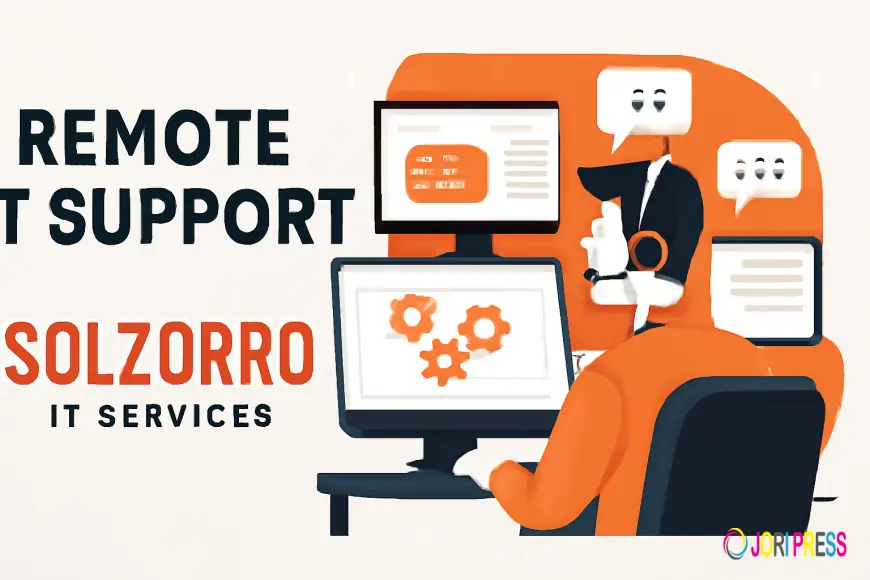Remote IT Support Services: A Complete Guide for Businesses
Discover how remote IT support services boost efficiency, cut costs, and keep your business running smoothly.

In today’s fast-paced business environment, IT downtime isn’t just an inconvenience—it’s costly. From security threats to software glitches, technology issues can bring productivity to a halt. That’s where remote IT support services step in. Instead of waiting for an on-site technician, businesses can resolve issues quickly, often within minutes, through secure online support.
In this guide, we’ll explore what remote IT support is, why it matters, and how businesses of all sizes can benefit from it.
What Are Remote IT Support Services?
Remote IT support services allow technicians to diagnose, troubleshoot, and resolve IT issues without being physically present at your office. Through secure connections, they can access devices, servers, or networks to provide real-time support.
This type of service typically covers:
-
Software troubleshooting
-
Security updates and patching
-
Network monitoring
-
Cloud support
-
Data backup and recovery assistance
Instead of waiting hours—or even days—for a technician to arrive, remote IT support provides near-instant help when you need it most.
Why Businesses Are Turning to Remote IT Support
1. Faster Problem Resolution
One of the biggest advantages is speed. With remote tools, IT specialists can log in to your systems within minutes, identify the issue, and fix it before it escalates.
2. Cost Savings
Remote IT support eliminates the need for travel, reducing costs for both the provider and the client. Many providers offer affordable monthly plans, making it easier for small businesses to access enterprise-level support.
3. Scalability for Growing Teams
As your workforce expands—especially if you hire remote employees—remote IT support ensures consistent and secure tech management across locations.
4. 24/7 Availability
Many providers offer around-the-clock services, ensuring your business stays operational even outside regular office hours.
Key Features of Remote IT Support Services
Proactive Monitoring
Instead of waiting for problems, IT providers monitor your systems to identify and prevent issues before they disrupt business operations.
Cybersecurity Support
With cyberattacks on the rise, remote IT teams can implement firewalls, antivirus protections, and multi-factor authentication to safeguard sensitive data.
Cloud & Collaboration Tools
From Microsoft 365 to Google Workspace, remote IT support ensures your team has reliable access to the tools they need.
Data Backup & Recovery
Remote IT support includes automated backups and disaster recovery solutions to protect your business-critical information.
? Learn more about how Solorro provides secure and efficient remote IT support services tailored for small and mid-sized businesses.
Benefits for Small and Mid-Sized Businesses
Smaller businesses often lack in-house IT departments. Remote support bridges this gap by providing access to experts at a fraction of the cost. Some key benefits include:
-
Reduced Downtime: Problems are solved quickly.
-
Improved Security: Regular updates and monitoring protect against threats.
-
Cost Efficiency: Predictable monthly plans instead of costly emergency calls.
-
Employee Productivity: Teams can focus on their work without IT distractions.
Best Practices for Using Remote IT Support Effectively
-
Choose a Reliable Provider – Look for providers with proven experience, certifications, and positive client reviews.
-
Prioritize Security – Ensure the provider uses encrypted remote access tools and complies with data protection regulations.
-
Train Employees – Basic cybersecurity awareness reduces preventable IT issues.
-
Combine Remote & On-Site Support – While remote support handles most issues, complex hardware failures may still require on-site help.
Challenges and Limitations
While remote IT support is highly effective, businesses should be aware of potential limitations:
-
Internet Dependence: Support requires a stable internet connection.
-
Hardware Issues: Physical problems like damaged equipment still require on-site attention.
-
Trust & Security Concerns: Businesses must ensure their provider follows strict data privacy protocols.
FAQs About Remote IT Support Services
Q1: What types of issues can remote IT support fix?
A: Remote IT support can resolve software problems, network issues, email setup, virus removal, cloud access, and more.
Q2: Is remote IT support secure?
A: Yes. Reputable providers use encrypted connections, multi-factor authentication, and strict access controls to protect business data.
Q3: Can remote IT support replace an in-house IT team?
A: For small to mid-sized businesses, remote support often replaces or supplements an in-house team, providing expertise at lower cost.
Q4: How much does remote IT support cost?
A: Pricing varies but is typically offered in flexible monthly plans, making it more affordable than on-demand or emergency services.
Conclusion
Remote IT support services have become an essential solution for businesses seeking fast, cost-effective, and secure IT management. Whether you’re a small company without an IT team or a growing business with remote employees, having access to expert technicians can significantly reduce downtime and improve productivity.
By choosing the right provider, implementing best practices, and balancing remote and on-site support, your business can thrive in today’s digital-first environment.
Files
What's Your Reaction?
 Like
0
Like
0
 Dislike
0
Dislike
0
 Love
0
Love
0
 Funny
0
Funny
0
 Angry
0
Angry
0
 Sad
0
Sad
0
 Wow
0
Wow
0
























































